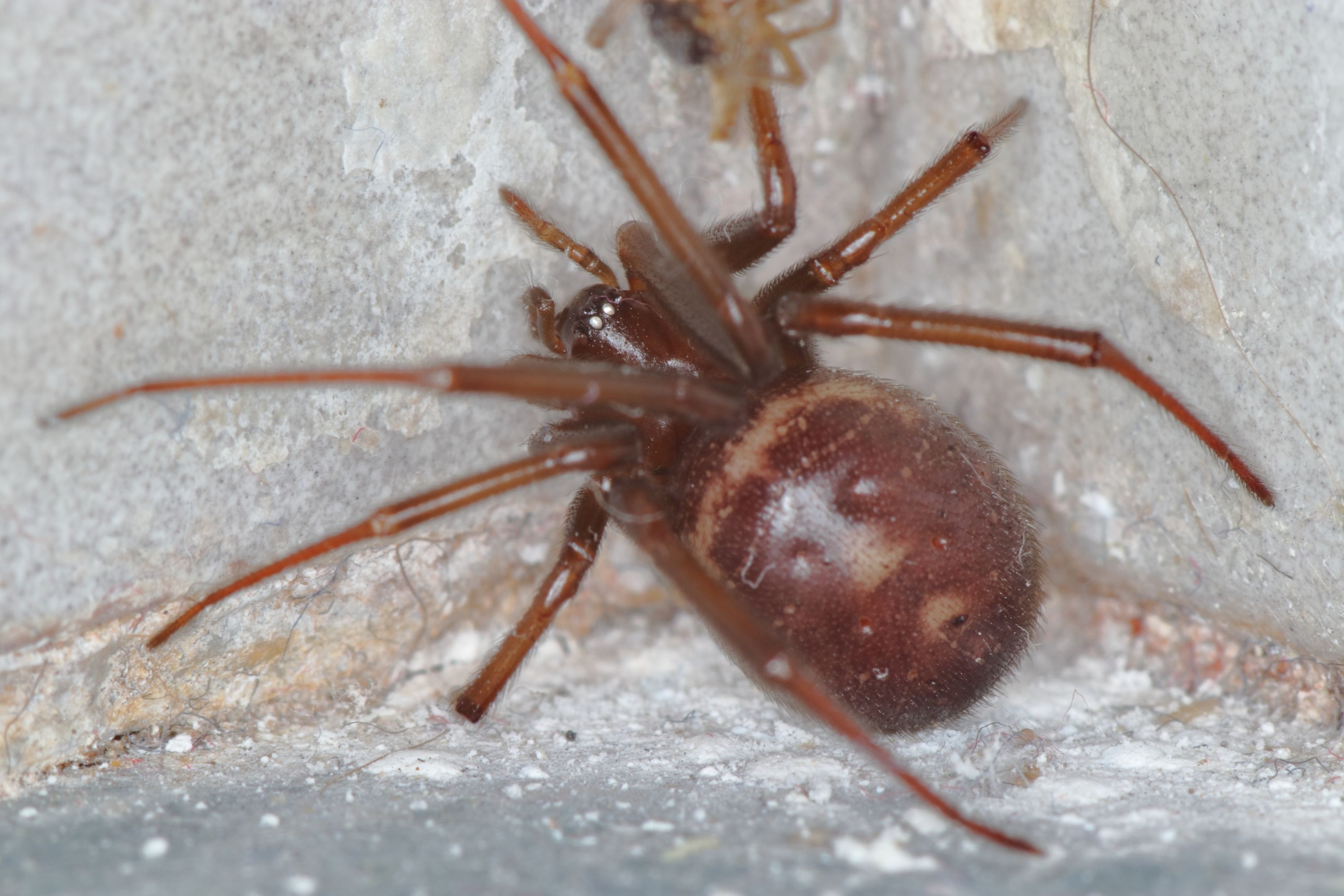False widow
(Steatoda grossa)

Description
Steatoda grossa, commonly known as the cupboard spider, the dark comb-footed spider, the brown house spider (in Australia), or the false widow or false black widow (though several other species are known by these names), is a common species of spider in the genus Steatoda. Like black widows, the female S. grossa is 6-10.5 mm in length and dark colored with a round, bulbous abdomen. Typical coloration ranges from purplish brown to black, with light-colored markings. Unlike black widows, redbacks, and other Latrodectus species, S. grossa does not have a bright red hourglass pattern or any other bright, distinctive markings. Like many spiders, the male is sometimes smaller but can many times be nearly as long as the females. It measures 4.1-10.0 mm in length and is thinner than the female. The two sexes are colored similarly; however, the sexually mature male almost always has lighter, more reddish-coloured legs than the female. S. grossa spiders may shed up to six times (instars) before reaching maturity. According to Charles Hogue (Insects of the Los Angeles Basin, 1993), it reportedly preys on black widows. They can go several months without feeding, provided they have access to water. A well-fed female can lay three or more egg sacs each year. Each egg sac typically contains between 40-100 eggs. The mother can often be observed watching her eggs for hours, even days, at a time once the eggs start changing color and grow close to hatching. At normal household temp/humidity, an egg will usually hatch within a month of being laid. The spiderlings are independent from time of hatch. Female S. grossa spiders can live up to six years; the typical lifespan for the male is 1-1.5 years. Males often die shortly after mating. As is common with other members of the family Theridiidae, S. grossa constructs a cobweb, i.e. an irregular tangle of sticky silken fibers. As with other web weavers, these spiders have very poor eyesight and depend mostly on vibrations reaching them through their webs to orient themselves to prey or warn them of larger animals that could pose a danger. They are not aggressive, and most injuries to humans are due to defensive bites delivered when a spider gets unintentionally squeezed or pinched. It is possible that some bites may result when a spider mistakes a finger thrust into its web for its normal prey, but ordinarily intrusion by any large creature will cause these spiders to flee.
Taxonomic tree:







